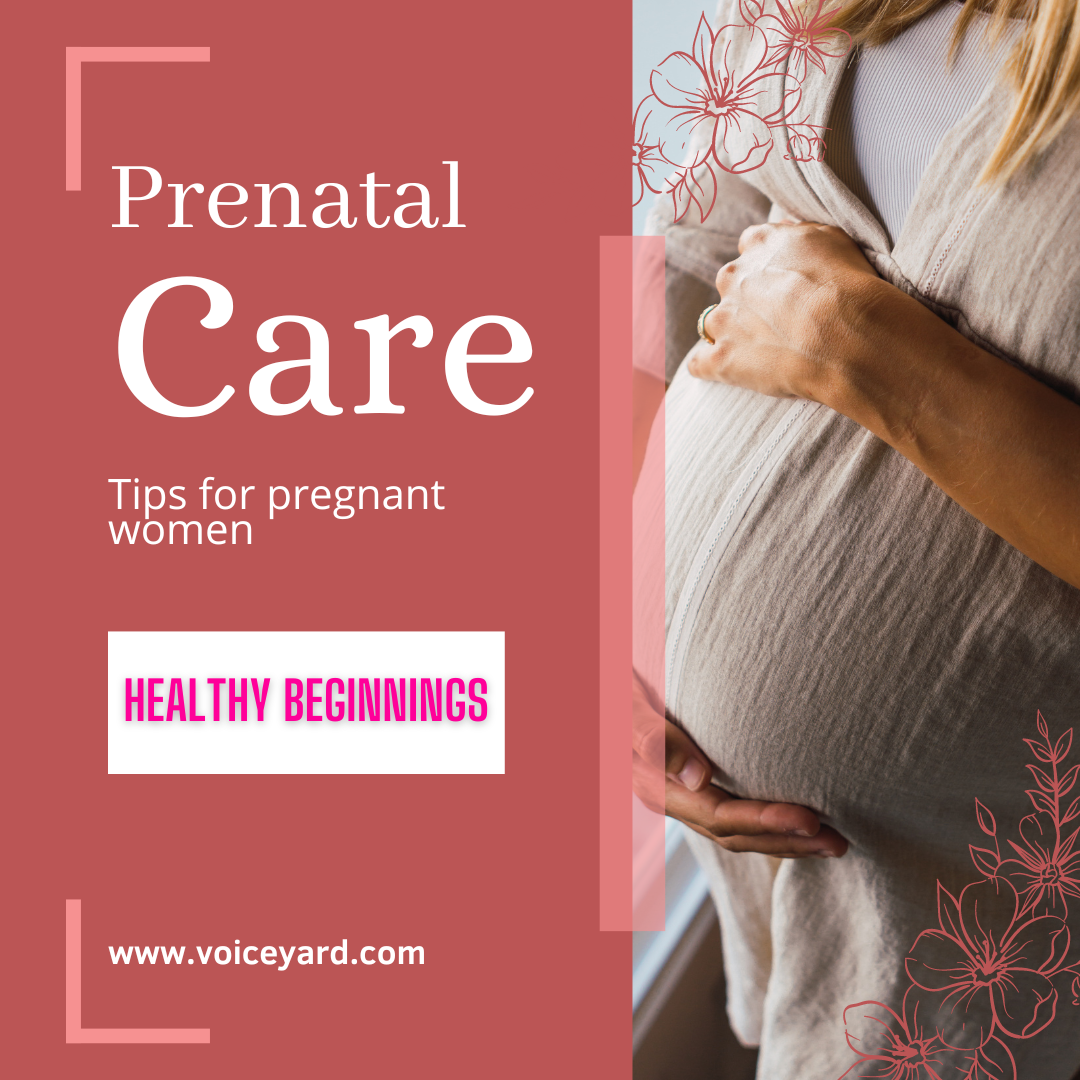Protecting Your Children from Pornography: A Parent’s Guide
Chapter 1: Understanding the Risks of Pornography Exposure
The dangers of early pornography exposure
The impact of pornography on children’s development
The addictive nature of pornography
Early exposure to pornography can have serious negative consequences for children’s development. Children who are exposed to pornography at a young age are more likely to develop negative attitudes towards sex, engage in risky sexual behavior, and experience a range of emotional and psychological problems.
One of the most significant impacts of pornography on children’s development is the normalization of unhealthy sexual attitudes and behaviors. Children who are exposed to pornography may believe that the behaviors they see are normal or desirable, leading to harmful attitudes towards sex and relationships. Exposure to pornography can also lead to a distorted understanding of sexuality, leading to unrealistic expectations and beliefs about sexual behavior.
Another significant danger of early pornography exposure is the risk of addiction. Pornography has an addictive nature that can lead to compulsive and harmful behavior. Exposure to pornography can lead to changes in the brain’s reward system, causing users to seek out more and more explicit material to achieve the same level of stimulation. This can lead to a range of negative consequences, including decreased sexual functioning, social isolation, and relationship problems.
It is important for parents to understand the dangers of early pornography exposure and take steps to protect their children from this harmful material. By establishing safe technology guidelines, having open and honest conversations, teaching critical thinking skills, providing positive alternatives, and seeking help when necessary, parents can help their children develop healthy attitudes towards sex and relationships and avoid the negative consequences of pornography exposure.
Chapter 2: Establishing Safe Technology Guidelines
Setting parental controls on devices
Monitoring your child’s online activity
Establishing screen-free zones and times
Explaining the importance of privacy and safety online
Setting parental controls on devices, monitoring your child’s online activity, establishing screen-free zones and times, and explaining the importance of privacy and safety online are all effective strategies for protecting children from pornography and other online dangers.
Parental controls are features that allow parents to limit their child’s access to certain types of content on electronic devices such as computers, smartphones, and tablets. These controls can be set up to block access to specific websites or types of content, limit screen time, and monitor online activity. By setting up parental controls, parents can ensure that their children are not exposed to pornography or other harmful material online.
Monitoring your child’s online activity is another important strategy for protecting them from online dangers. Parents can use software to monitor their child’s internet use, including the websites they visit, the apps they use, and the content they access. This can help parents identify potential risks and address them before they become more serious.
Establishing screen-free zones and times is another effective strategy for protecting children from online dangers. Parents can set aside specific times and areas in the home where electronic devices are not allowed, such as during family meals or in bedrooms at night. This can help children develop healthy habits around technology use and reduce the amount of time they spend online.
Finally, it is essential to explain the importance of privacy and safety online to children. Parents should teach their children about online privacy, including how to protect their personal information and avoid sharing sensitive data online. Children should also be taught about the risks of online predators and how to avoid potentially dangerous situations.
By using these strategies, parents can help protect their children from pornography and other online dangers, and promote healthy technology use and development.
Chapter 3: Having Open and Honest Conversations
Talking to your child about pornography and its risks
Addressing any questions or concerns your child may have
Encouraging your child to come to you if they encounter pornography online
Providing age-appropriate information about sex education
Talking to your child about pornography and its risks, addressing any questions or concerns your child may have, encouraging your child to come to you if they encounter pornography online, and providing age-appropriate information about sex education are all important steps in protecting children from the negative effects of pornography.
It is important to start the conversation about pornography at a young age, as children may be exposed to it earlier than parents might expect. Parents should explain the risks of pornography exposure, including the negative impact it can have on emotional and psychological development, and the potential for addiction.
Parents should also address any questions or concerns their child may have about pornography, and provide age-appropriate information about sex education. This can include discussing healthy relationships, consent, and how to recognize and avoid potentially dangerous situations.
It is important to encourage children to come to parents if they encounter pornography online, and to assure them that they will not be in trouble for reporting it. Parents can also explain how to block or report inappropriate content and how to navigate the internet safely.
Finally, parents should provide age-appropriate sex education to their children, including discussions about consent, boundaries, and healthy relationships. By providing accurate and clear information, parents can help their children make informed decisions about their sexual health and well-being, and reduce the risk of negative outcomes such as unplanned pregnancies or sexually transmitted infections.
Overall, open communication, age-appropriate education, and a safe and supportive environment can help protect children from the negative effects of pornography and promote healthy development.
Chapter 4: Teaching Critical Thinking Skills
Encouraging your child to question what they see online
Teaching your child to differentiate between real-life and unrealistic portrayals of sex and relationships
Teaching your child to recognize harmful and exploitative content
Encouraging your child to question what they see online, teaching your child to differentiate between real-life and unrealistic portrayals of sex and relationships, and teaching your child to recognize harmful and exploitative content are all important strategies for protecting children from the negative effects of pornography.
Children should be taught to question the content they see online, including images, videos, and social media posts. Parents can encourage their children to ask questions such as, “Is this information accurate?” “Who created this content?” “What is the purpose of this content?” By questioning the content they see, children can learn to think critically and develop healthy skepticism towards online material.
Parents should also teach their children to differentiate between real-life and unrealistic portrayals of sex and relationships. Children should be taught that the sexual behavior they see in pornography is not a realistic portrayal of healthy relationships and that such content can be harmful. They should also learn that not all people look and behave the same way and that every individual has unique preferences and boundaries.
Parents should also teach their children to recognize harmful and exploitative content. Children should be taught to recognize abusive or exploitative content, including content that is violent, degrading, or objectifying. Parents can also teach their children to be aware of online grooming and exploitation, including identifying manipulative behavior and learning how to avoid potentially dangerous situations.
By teaching children to question what they see online, differentiate between real-life and unrealistic portrayals of sex and relationships, and recognize harmful and exploitative content, parents can help their children develop healthy attitudes towards sexuality and relationships and reduce the risk of negative outcomes associated with pornography exposure.
Chapter 5: Providing Positive Alternatives
Encouraging your child to engage in healthy activities
Providing access to age-appropriate media
Modeling positive attitudes towards sex and relationships
Encouraging your child to engage in healthy activities, providing access to age-appropriate media, and modeling positive attitudes towards sex and relationships are all important strategies for protecting children from the negative effects of pornography.
Parents should encourage their children to engage in healthy activities, such as sports, hobbies, and socializing with friends. These activities can help children develop positive self-esteem, healthy relationships, and reduce the risk of unhealthy behaviors such as addiction.
Parents should also provide access to age-appropriate media, such as books, movies, and television shows that promote healthy attitudes towards sex and relationships. Parents should carefully select media that aligns with their family’s values and supports positive behaviors such as communication, consent, and healthy relationships.
Finally, parents should model positive attitudes towards sex and relationships themselves. This includes being open and honest with their children about sexuality and relationships, communicating respectfully with their partners, and treating others with kindness and respect. By modeling healthy attitudes towards sexuality and relationships, parents can teach their children the values and behaviors they need to form positive relationships throughout their lives.
Overall, encouraging children to engage in healthy activities, providing access to age-appropriate media, and modeling positive attitudes towards sex and relationships are all important strategies for promoting healthy development and protecting children from the negative effects of pornography.
Chapter 6: Getting Help When Needed
Knowing the signs of pornography addiction
Seeking professional help if necessary
Supporting your child through recovery
Knowing the signs of pornography addiction, seeking professional help if necessary, and supporting your child through recovery are important steps for parents to take in protecting their children from the negative effects of pornography.
Signs of pornography addiction can include compulsive behavior, preoccupation with sexual content, mood swings, anxiety, depression, and difficulty controlling impulses. Parents should be aware of these signs and take action if they notice them in their child’s behavior.
If a child is exhibiting signs of pornography addiction, it is important to seek professional help from a qualified therapist or counselor. A trained professional can provide specialized support and treatment to help the child overcome their addiction.
Parents should also provide emotional support and encouragement to their child throughout the recovery process. This includes being patient, compassionate, and understanding. Parents can also help their child by setting boundaries and providing structure, such as limiting screen time and creating a safe and supportive environment at home.
It is important to remember that recovery from pornography addiction is a process that takes time, patience, and support. By being aware of the signs of addiction, seeking professional help if necessary, and supporting their child through recovery, parents can help their child overcome their addiction and promote healthy development.
Conclusion: Protecting your child from pornography is a complex issue that requires a combination of strategies. By establishing safe technology guidelines, having open and honest conversations, teaching critical thinking skills, providing positive alternatives, and getting help when needed, you can help your child navigate the online world safely and with confidence.
Chapter 1: Understanding the Risks of Pornography Exposure
Pornography is more accessible today than it has ever been. With the proliferation of technology, children can easily access pornography on their television, computer, and cell phone. Unfortunately, early exposure to pornography can have a negative impact on children’s development. Studies have shown that children who are exposed to pornography at a young age are more likely to have negative attitudes towards sex, develop unhealthy sexual habits, and become addicted to pornography. It is essential to understand the risks of pornography exposure and take action to protect your child.
There is no denying that the accessibility of pornography has increased with the advancement of technology, and it is crucial for parents to take proactive steps to protect their children from its harmful effects. Children who are exposed to pornography may develop unrealistic expectations and beliefs about sex and relationships, and may struggle with self-esteem, anxiety, and depression. Additionally, exposure to pornography at a young age can desensitize children to sexual content, which can lead to a desire for more explicit and extreme content over time.
Parents should take an active role in monitoring their children’s online activity and educating them about healthy sexuality and relationships. This includes setting parental controls on devices, establishing screen-free zones and times, and having open and honest conversations with their children about pornography and its risks. Parents can also encourage their children to engage in healthy activities, provide access to age-appropriate media, and model positive attitudes towards sex and relationships.
If a child does become addicted to pornography, seeking professional help from a qualified therapist or counselor can be a vital step in their recovery. It is important to remember that recovery is a process that requires patience, compassion, and support.
Overall, it is important for parents to stay informed about the risks of pornography exposure and take proactive steps to protect their children’s physical and emotional health. By providing education, support, and resources, parents can help their children develop healthy attitudes towards sexuality and relationships, and promote their overall well-being.
Chapter 2: Establishing Safe Technology Guidelines
One of the most effective ways to protect your child from pornography is to establish safe technology guidelines. You can set parental controls on your devices to prevent your child from accessing inappropriate content. You can also monitor your child’s online activity to ensure they are not visiting dangerous websites or engaging in risky behavior. It’s essential to establish screen-free zones and times to encourage your child to engage in other activities. You should also explain the importance of privacy and safety online and teach your child how to protect their personal information.
Yes, establishing safe technology guidelines is a crucial step in protecting children from the negative effects of pornography. Parental controls are readily available on most devices, and they can be a powerful tool in preventing children from accessing inappropriate content. Parents should also regularly monitor their children’s online activity and educate them about the dangers of risky behavior and unsafe websites.
Establishing screen-free zones and times can also help children develop healthy habits and reduce the risk of exposure to pornography. Parents can encourage their children to engage in physical activity, socialize with friends and family, and pursue hobbies and interests that do not involve technology.
Privacy and safety online are also important concepts for children to understand. Parents should teach their children about the importance of protecting personal information, avoiding unsafe websites and strangers online, and reporting any suspicious or inappropriate behavior to a trusted adult.
Overall, setting safe technology guidelines can go a long way in protecting children from the harmful effects of pornography and other online dangers. By establishing boundaries, educating children, and monitoring their activity, parents can help their children develop healthy habits and stay safe online.
Chapter 3: Having Open and Honest Conversations
It’s essential to have open and honest conversations with your child about pornography and its risks. You should start these conversations early and provide age-appropriate information about sex education. Encourage your child to ask questions and address any concerns they may have. It’s essential to let your child know that they can come to you if they encounter pornography online and that they won’t be punished for doing so. By having these conversations, you can help your child develop healthy attitudes towards sex and relationships.
Having open and honest conversations with children about pornography and its risks is an essential step in promoting healthy attitudes towards sex and relationships. These conversations should be age-appropriate and tailored to the child’s level of understanding.
Parents should start these conversations early and encourage their children to ask questions and share their thoughts and concerns. It’s essential to create a safe and non-judgmental environment where children feel comfortable discussing sensitive topics.
Parents should also emphasize that they are available to support their children if they encounter pornography online and that they will not be punished for doing so. This can help children feel more comfortable coming forward and seeking help if they need it.
It’s important to provide accurate and age-appropriate information about sex education, including discussions about healthy relationships, consent, and the risks of engaging in risky sexual behavior. This can help children develop a better understanding of healthy sexual behavior and relationships and reduce their risk of negative consequences.
By having open and honest conversations about pornography and sex education, parents can help their children develop healthy attitudes towards sexuality and relationships, build strong communication skills, and stay safe online.
Chapter 4: Teaching Critical Thinking Skills
Teaching your child critical thinking skills is another effective way to protect them from pornography. Encourage your child to question what they see online and to differentiate between real-life and unrealistic portrayals of sex and relationships. Teach your child to recognize harmful and exploitative content and to avoid it. By teaching your child critical thinking skills, you can help them develop a healthy and realistic understanding of sex and relationships.
Yes, teaching critical thinking skills to children is an essential step in protecting them from the harmful effects of pornography. Critical thinking skills enable children to question what they see online, differentiate between real-life and unrealistic portrayals of sex and relationships, and recognize harmful and exploitative content.
Parents can encourage their children to ask questions and think critically about the information they encounter online. This can involve discussing the differences between fantasy and reality, the potential harms of pornography, and the importance of respectful and healthy relationships.
Teaching children to recognize harmful and exploitative content can also help protect them from online dangers. Parents can teach their children to identify warning signs of harmful content, such as graphic or violent images, and encourage them to avoid such content.
By teaching critical thinking skills, parents can help their children develop a realistic and healthy understanding of sex and relationships, and protect them from the potential harms of pornography.
Chapter 5: Providing Positive Alternatives
It’s essential to provide your child with positive alternatives to pornography. Encourage your child to engage in healthy activities like sports, music, or art. Provide access to age-appropriate media that promotes positive attitudes towards sex and relationships. You should also model positive attitudes towards sex and relationships by having healthy conversations with your partner and demonstrating affection in front of your child.
Absolutely. Providing positive alternatives to pornography is an important step in protecting children from its harmful effects. Encouraging children to engage in healthy activities such as sports, music, or art can help to promote positive attitudes towards physical activity and creativity, and provide an outlet for children to express themselves and relieve stress.
It’s also important to provide access to age-appropriate media that promotes positive attitudes towards sex and relationships. This can include books, movies, and TV shows that promote healthy relationships and respect for others. Parents can also talk to their children about the media they are consuming and encourage them to question and analyze what they see.
Modeling positive attitudes towards sex and relationships is also crucial. Parents can demonstrate affection in front of their children and have healthy conversations with their partner about sex and relationships. This can help to normalize healthy behaviors and attitudes towards sex and relationships.
By providing positive alternatives to pornography and modeling healthy behaviors, parents can help protect their children from the harmful effects of pornography and promote healthy attitudes towards sex and relationships.
Chapter 6: Getting Help When Needed
If your child is struggling with pornography addiction, it’s essential to seek professional help. Know the signs of pornography addiction, such as secrecy, shame, and an inability to stop viewing pornography. Support your child through their recovery by offering encouragement and understanding. It’s essential to remember that pornography addiction is a complex issue that requires professional help.
Absolutely. If a child is struggling with pornography addiction, it’s crucial to seek professional help. Pornography addiction can have a significant impact on a child’s mental health, social life, and overall wellbeing. As you mentioned, some signs of pornography addiction may include secrecy, shame, and an inability to stop viewing pornography.
Parents can support their child through recovery by offering encouragement and understanding. It’s important to remember that pornography addiction is a complex issue that requires professional help. Seeking the assistance of a qualified mental health professional or addiction specialist can provide the child with the necessary tools and support to overcome their addiction.
In addition to seeking professional help, parents can take steps to create a supportive and understanding environment for their child. This may include open and honest communication, setting clear boundaries around technology use, and offering healthy alternatives to pornography.
Ultimately, recovery from pornography addiction is a process that requires patience, persistence, and support from family and loved ones. With the right resources and support, children can overcome pornography addiction and develop healthy attitudes towards sex and relationships.
Conclusion
Protecting your child from pornography is a complex issue that requires a combination of strategies. By establishing safe technology guidelines, having open and honest conversations, teaching critical thinking skills, providing positive alternatives, and getting help when needed, you can help your child navigate the online world safely and with confidence. It’s essential to remember that protecting your child from pornography is an ongoing process that requires constant attention and effort. By being vigilant and proactive, you can help your child develop healthy attitudes towards sex and relationships and avoid the negative consequences of pornography exposure.




